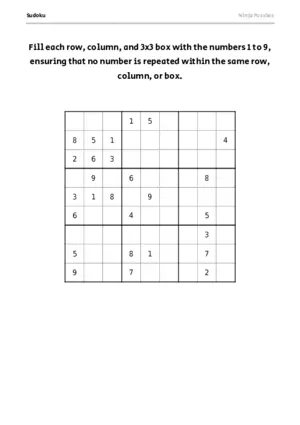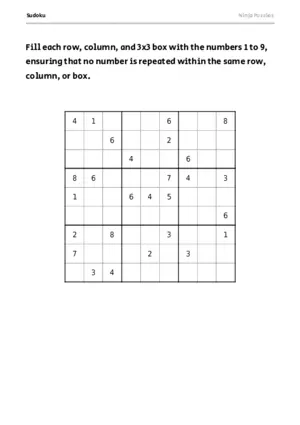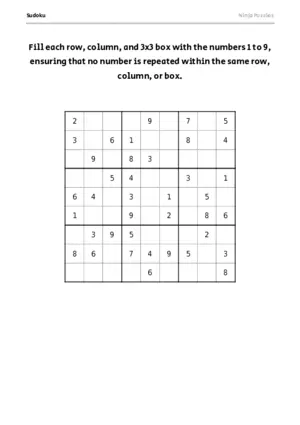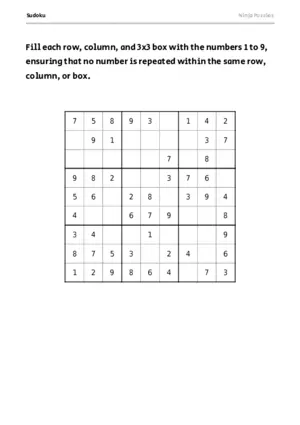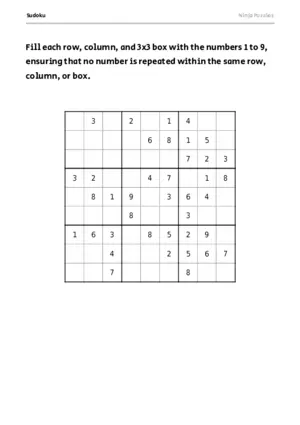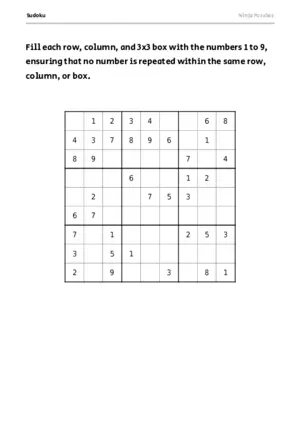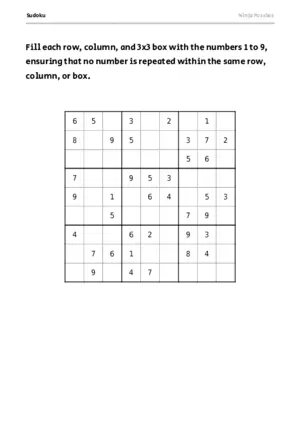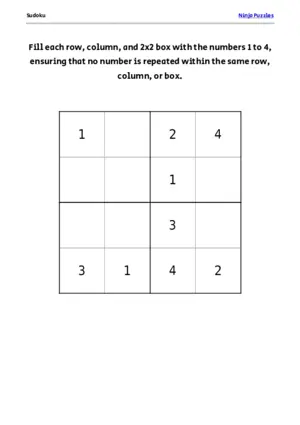Sudoku: Coloring Strategy and Techniques
The Coloring strategy is an advanced solving technique in Sudoku puzzles. It involves assigning colors, usually two colors, to candidates in order to identify and leverage the relationships between these colors to make deductions and solve the puzzle.
Here’s how the Coloring strategy works:
- Analyze the Puzzle: Begin by examining the puzzle grid and identify the candidate numbers in each square.
- Choose Colors: Select two distinct colors (often represented by shading or marking with different symbols) to assign to the candidates. For example, you can use red and blue or any other pair of colors.
- Start Coloring: Choose a candidate and assign one of the colors to it. Then, examine the squares connected to this candidate (i.e., squares in the same row, column, or box).
- Apply the Rule of Color Exclusivity: If a connected square contains the same candidate and has been assigned a color, mark it with the same color. However, if the connected square contains the same candidate but has not been assigned a color, mark it with the other color.
- Identify Color Conflicts: As you continue coloring, you may encounter a square that has been assigned both colors. This indicates a conflict in the puzzle. Color conflicts can occur when there are two different valid solutions for a particular set of candidates.
- Make Deductions: Once you identify color conflicts, you can make deductions based on the relationships between the colored squares. If a color conflict arises, it means that one of the conflicting squares must be the correct value. You can eliminate the conflicting candidate from other squares of the same color.
- Update the Puzzle: After making deductions using the Coloring strategy, reassess the puzzle and repeat the process, looking for additional color conflicts and making further eliminations.
The Coloring strategy allows you to create distinct groups of candidates based on their assigned colors. By identifying color conflicts, you can eliminate candidates and narrow down the possibilities, bringing you closer to solving the puzzle.
Mastering the Coloring strategy requires practice and careful observation. It’s important to note that Coloring can be a complex technique, and its effectiveness may vary depending on the puzzle. Some puzzles may have more opportunities for deductions using Coloring, while others may require the combination of this strategy with other techniques.
Sudoku Solver
If you get really stuck then we have an online Sudoku Solver, and a Sudoku Mini Solver to help you solve the most challenging Sudoku puzzles.
Advanced Sudoku Strategies
- Singleton Technique: This strategy involves identifying squares that have only one possible candidate number based on the numbers already present in the row, column, and box.
- Naked Pairs and Triples: When two or three squares in a unit (row, column, or box) have the same two or three candidate numbers, those numbers can be eliminated as possibilities from other squares in the unit.
- Hidden Pairs and Triples: This strategy focuses on identifying two or three candidate numbers that only appear in the same two or three squares within a unit. These numbers can then be eliminated as possibilities from other squares in the unit.
- Sudoku X-Wing: Sudoku X-Wing involves finding two rows or two columns where the same number can only occur in the same two positions. By eliminating that number as a possibility in the corresponding rows or columns, you can make further deductions.
- Swordfish: Similar to Sudoku X-Wing, Swordfish strategy expands the concept to three rows or three columns. It involves finding three rows or three columns where the same number can only occur in the same three positions, allowing for further eliminations.
- Sudoku Y-Wing: Sudoku Y-Wing is an advanced strategy that involves three cells and three numbers. By utilizing a specific pattern of candidate numbers, you can make deductions that lead to solving other squares.
- Sudoku XYZ-Wing: XYZ-Wing involves three cells and three numbers, with each number belonging to a different candidate list. It allows for deductions by creating chains of eliminations based on the relationships between the three numbers.
- Coloring: This strategy involves assigning colors (usually two) to candidates and using the relationships between these colors to make deductions.
- Backtracking: Backtracking is a brute-force technique that involves making educated guesses and trying different possibilities until a contradiction is reached or the puzzle is solved.

